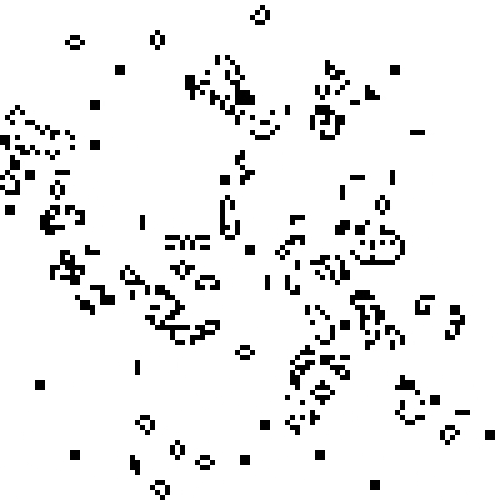
Embryo development from the lens of robustness
We are fascinated by embryo development, not only because complex patterns and forms can arise from a single cell, but because they arise in a highly reproducible fashion. This is especially relevant now with the promising medical applications of artificial tissues and organs. However, artificial tissues grown ex vivo are highly variable, and these inconsistencies are a big setback. Valuable lessons can be learned by asking how embryos build tissues in such a reproducible way. We enjoy asking these questions with spirits from engineering and physical science. For example, what are the sources of variations (e.g., genetic, biochemical, or mechanical) in a developmental process? What kind of regulatory network can buffer these variations to ensure reproducible pattern formation and morphogenesis?

Artificial cells following simple rules can create sophisticated patterns. Are complex tissue patterns and shapes in embryos also created by simple rules? image credit: https://towardsdatascience.com/the-game-of-life-the-legacy-of-john-conway-a86237180a4e
Can complex forms of life emerge from simple rules?
John Conway’s game of life nicely exemplify how complex patterns can emerge when all artificial cells follow a set of simple rules (of proliferation and death). Can we understand embryo development like we understand Conway’s game of life? What are the “simple rules” that all cells follow in order to build complex tissue pattern and shape with great precision. Our research is dedicated to unveil these “simple rules”(of proliferation, migration, cell fate decision, neighbor selection…etc), with the hope that one day we can understand (and possibly predict or engineer) embryo development like the way we play this very simple but insightful game.
Folding of neural plate into spinal cord – What is the role of mechanical forces during tissue morphogenesis?
Mechanical force as an organizer in tissue patterning and morphogenesis
Recent advances in mechanobiology revealed that cells are actively sensing their mechanical environment. At the same time, cells also modulate tissue mechanics during embryo development. The reciprocal interaction between mechano-sensing and mechano-induction pathways make mechanical force an appealing organizer in tissue patterning and morphogenesis. How are cell fate decisions and interpretation of developmental signaling influenced by mechanics? How do cells regulate the mechanics of their surrounding environments? We are curious about the crosstalk between cell mechanics, developmental signaling, and cell fate specification. And ultimately, how this crosstalk regulated pattern formation and morphogenesis through feedback control.

Photo modified from: https://geneticliteracyproject.org/2017/02/13/evolution-mind-termite-colonies-termites-models-human-brain
Are embryos built with Gaudi-style or termite-style?
Two major schools of thought have attempted to explain formation of complex pattern and structures in development. In one school, precise instructions are encoded in the genome, and cells are the agents that act accordingly, like La Sagrada Familia was built following Gaudi’s explicit blueprint. In the other school, local rules of cellular interactions emerge to form complex structures, like the way termites build a mound without a commander-in-chief. We suspect that key understanding of embryo development lies in the crosstalk between these two mechanisms. Cells are following global developmental signals, but also self-organizing locally to refine patterns and structures. We showed that such interactions mediate reliable pattern formation in the zebrafish spinal cord [link], and we are interested in extending this concept to understand development of other tissues.